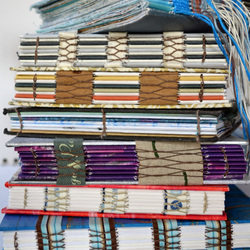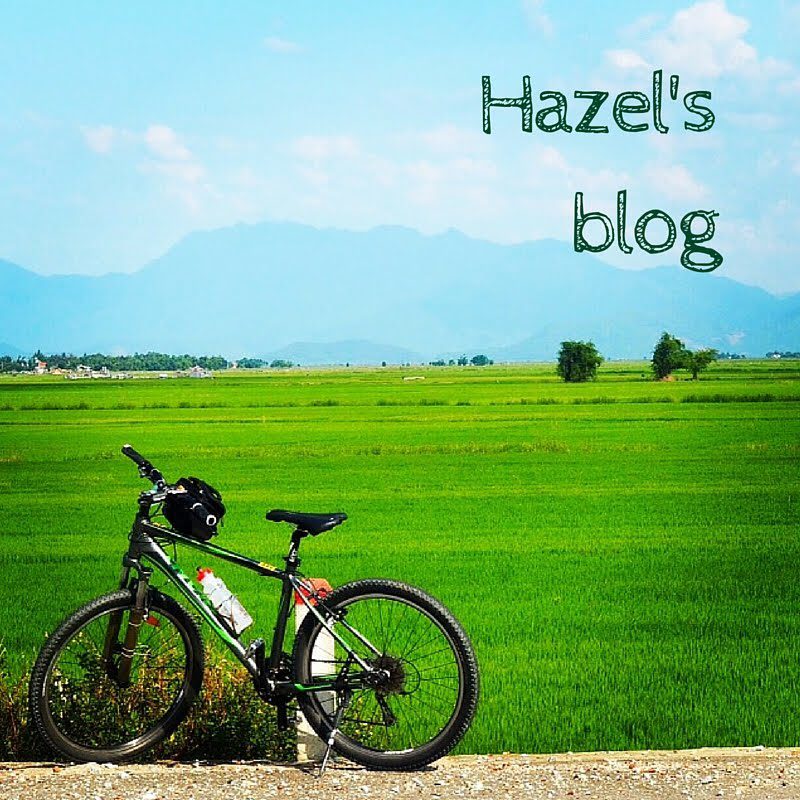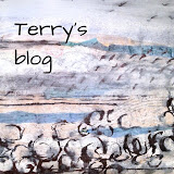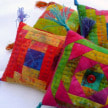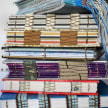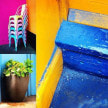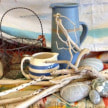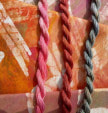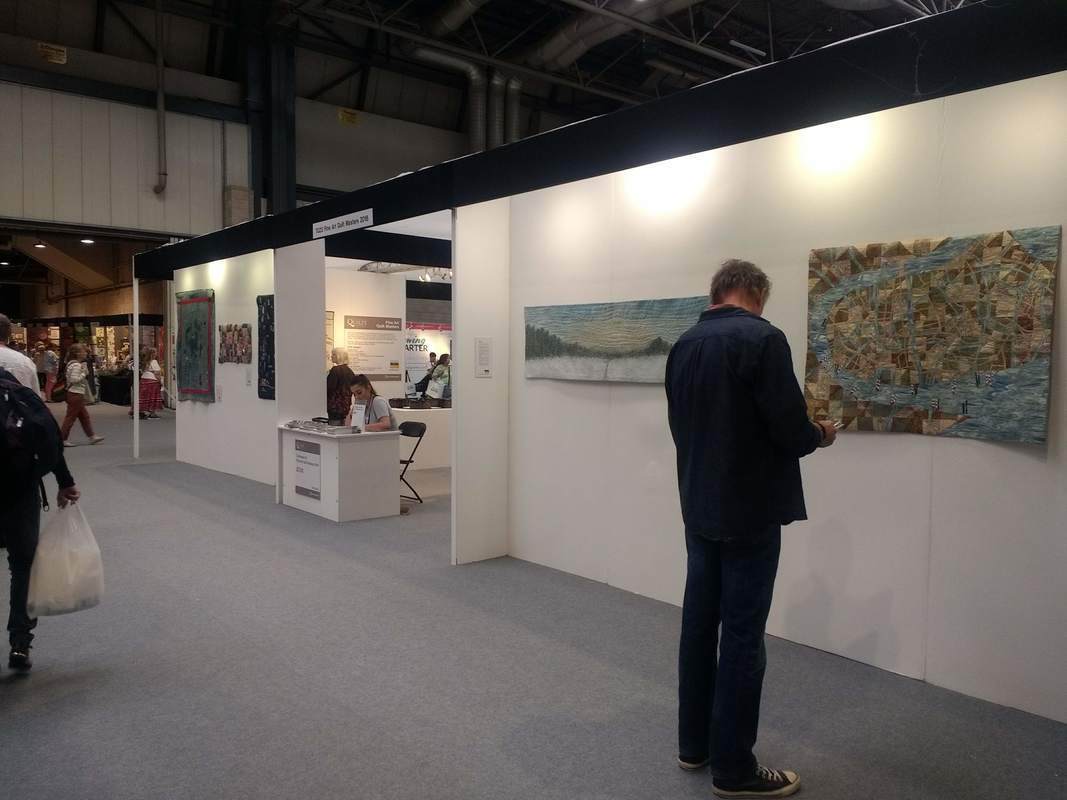
The aim of TFAQM gallery is 'to celebrate those quilts that transcend craft and demand equal billing with work shown in an art gallery' The judges were looking for a fully-resolved composition and powerful artistic impression. The design also had to be original, but other than that anything was possible!
On the Festival of Quilts site you can see images of all the chosen quilts, but I this week I'm sharing with you a little bit about my entry, The space between the moments.
So how did The space between the moments come into being?
I lived in Finland with my husband and children during the 1990s and fell in love with a country, its people and its way of life: it felt like home. I also learned how to cross country ski and would spend hours out alone in the snowy forests. Skiing was such a joy, and I relished the freedom and peace which came from being absolutely alone in a pure white, crisp landscape; for the last 20 years I have longed to capture that feeling again.
Finally, after two decades of waiting, I could once again capture the freedom and peace in a pure white, crisp landscape. The sun was all but gone and the moon and stars were out so on I skied, trusting my instincts and letting the tracks guide my skis. The only sound was the crack of a branch as it finally snapped under the weight of the snow and the rhythmic swish of my skis on the frozen snow.
By the time I crossed the frozen lake it was too dark to photograph the way I'd come, so the following day I went back just before sunset. I wasn't disappointed and I whipped out my phone and snapped a few panoramic shots before the light faded.
Fortunately I still had some vintage linen fabric, in the right proportions (the finished quilt is 1.98m x 49 cm), left over from making my daughter some curtains (the things we end up doing for those we love!) This went into a bucket of pale blue dye. Obviously not pale enough because it came out looking like a Caribbean afternoon. So I moved on to using screen printing inks. They are more fluid than regular textile paints and as they are translucent I can build up layers of colour. Which is just what I did! The blue colour still looks a bit perky in some of the photographs, but in 'the flesh' it's just about right.
Once the paint surface was dry and heat set it was time to layer up the quilt and start stitching. The sky and snow were quilted using my Bernina Q20. The sky first had relaxed free flowing lines which were then infilled with text. Annoyingly my hand guided text is very neat and tidy - not at all the look I wanted for this quilt, I was after something much scrappier. So I had to put in many hours trying out different styles, not sure I quite achieved it, old habits are hard to kick. I also needed to brush up my angular meandering pattern as it isn't one which comes naturally but it was so right for the snowy section.
With the machine quilting done it was time to relax and enjoy the hand quilting. I used to be a dedicated quilting hoop / tiny stitches kind of quilter. Not anymore. These days I just tip all the possible threads I may need, never mind about the weight, into a basket, grab a selection of needles and settle comfortably down for some relaxed hand stitching. I still use a thimble though. Can't hand stitch without one.
But there comes a time when you've just got to stop; my time was as I knelt on the floor in tears. I could do no more. I was done, exhausted and drained. No other quilt has required such an emotional commitment.
So I took the required photographs and sent off the form.
The quilt was rolled up and put it away. I went out and did some gardening.
You know the rest.
It was in the space between the moments that I missed you the most:
the silence falls, the breathing pauses, the eyes close.
In the space between the moments I remembered: you’re not here anymore.
But then, as I crossed that vast cold, white landscape, I turned and looked back from where I’d come
and I finally realised:
it’s in the space between the moments that I can find you.
That’s where you are.
So now I pause awhile and be.
Be there with you
in the space between the moments.
Hazel
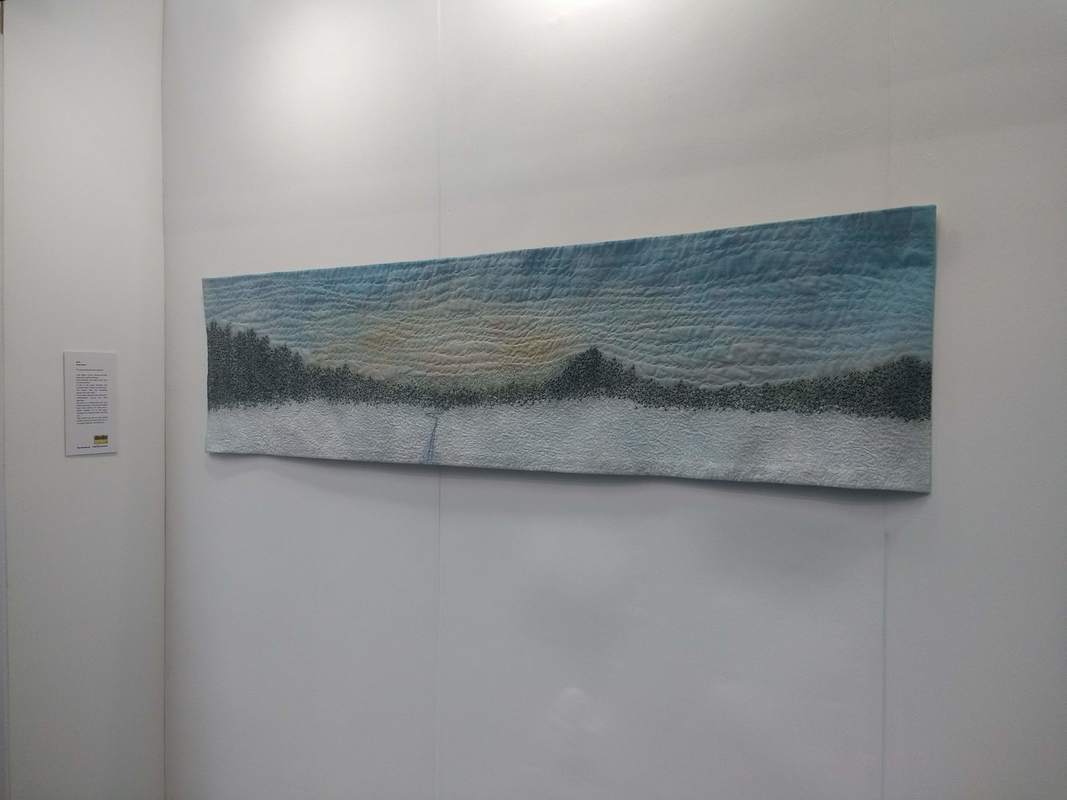
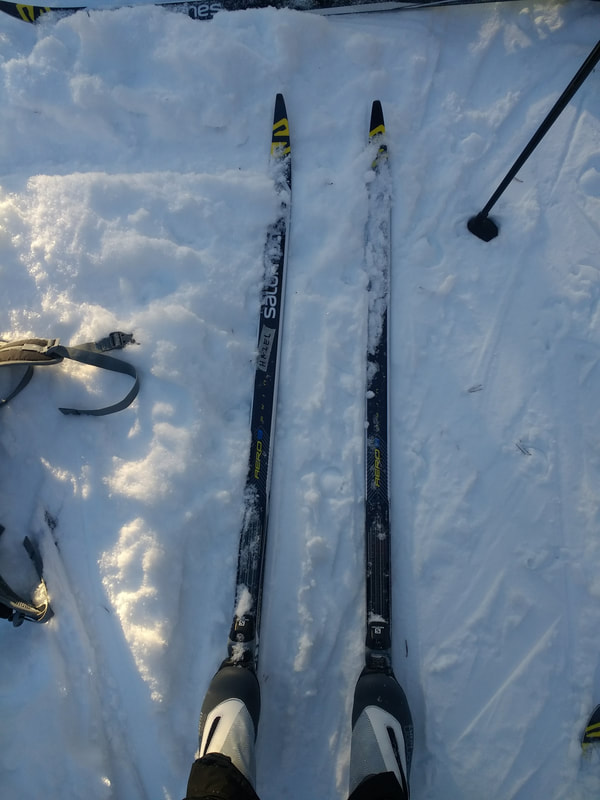
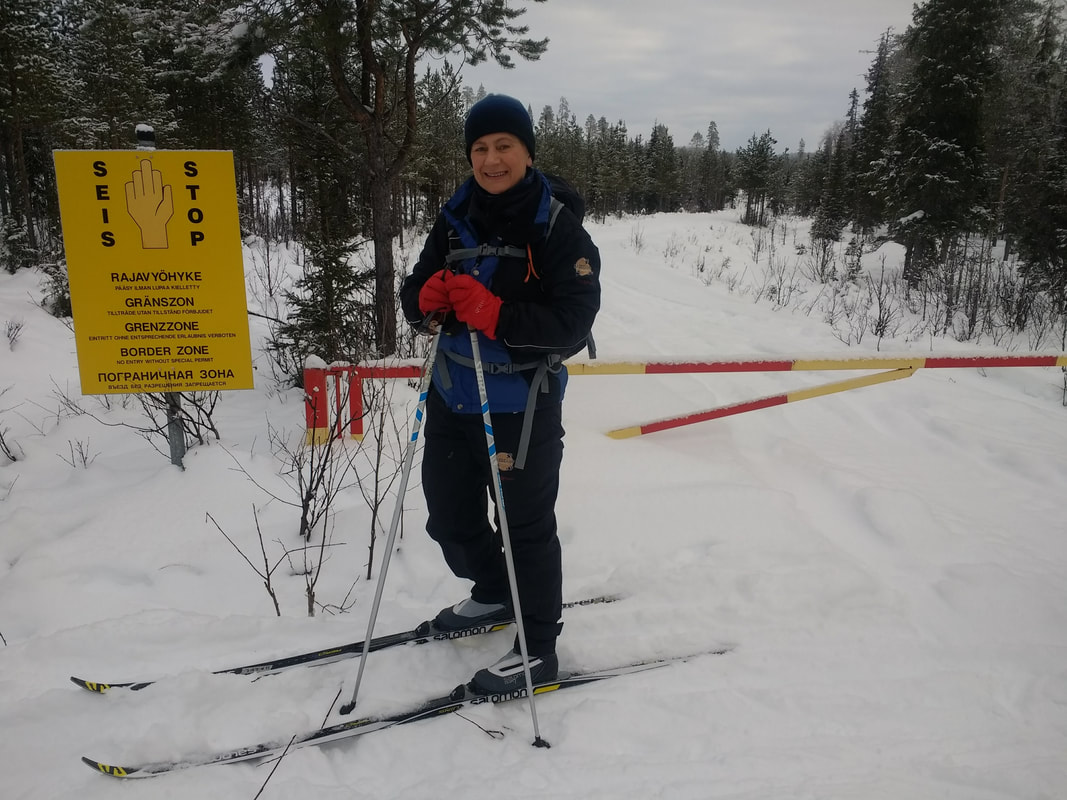

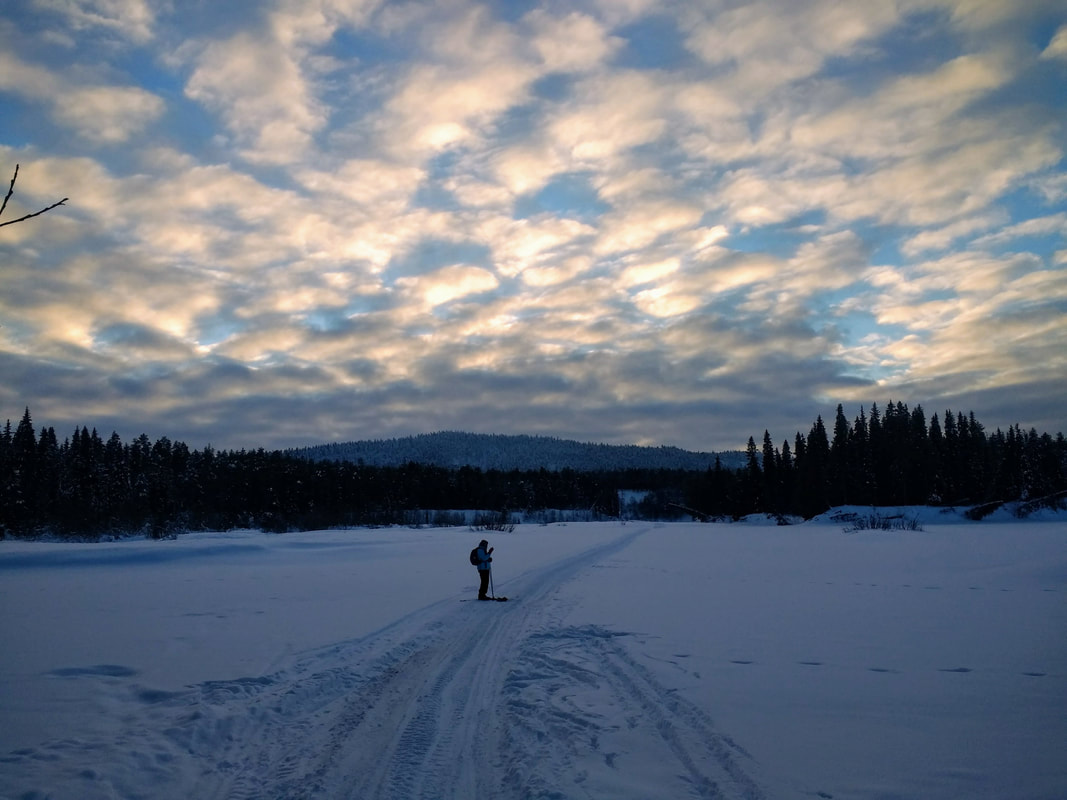

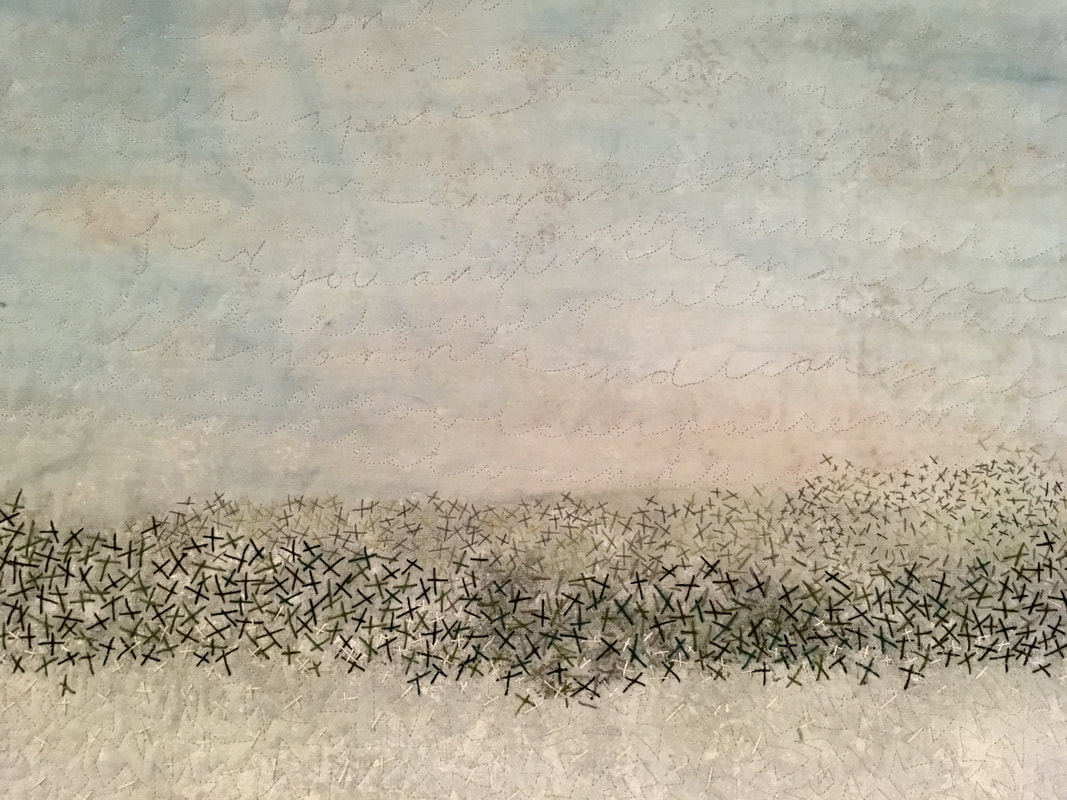
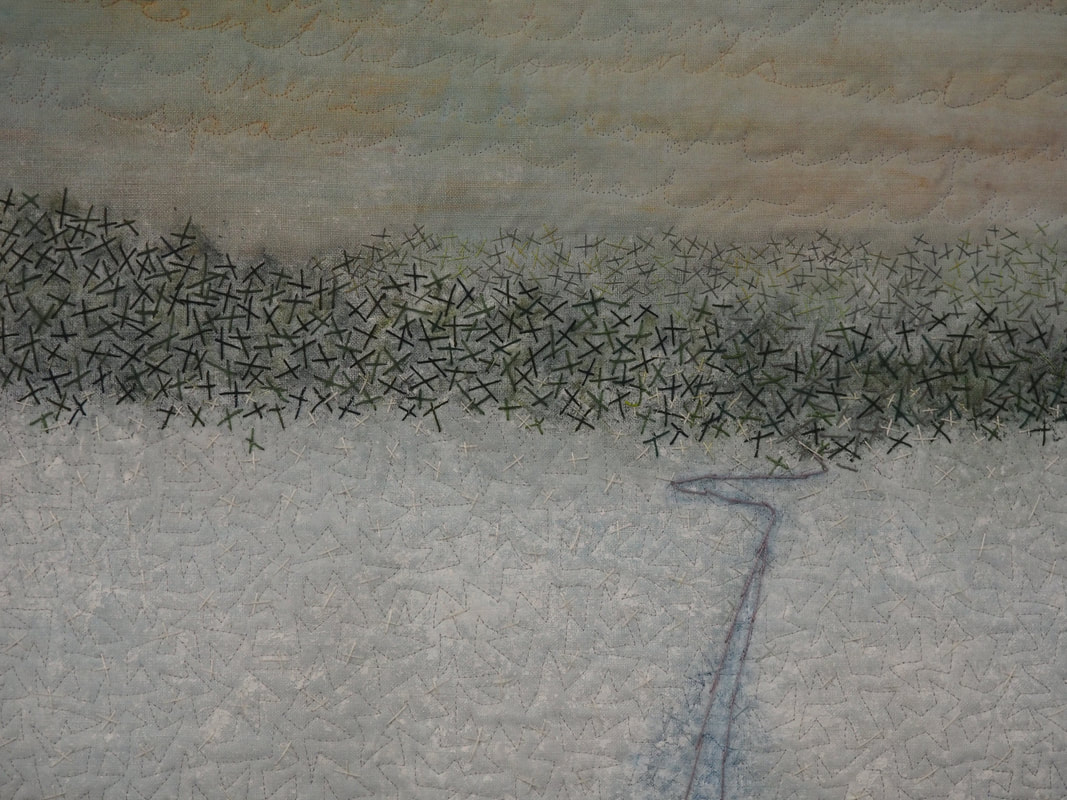

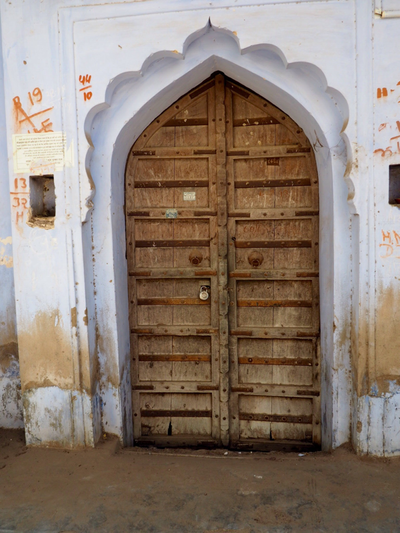
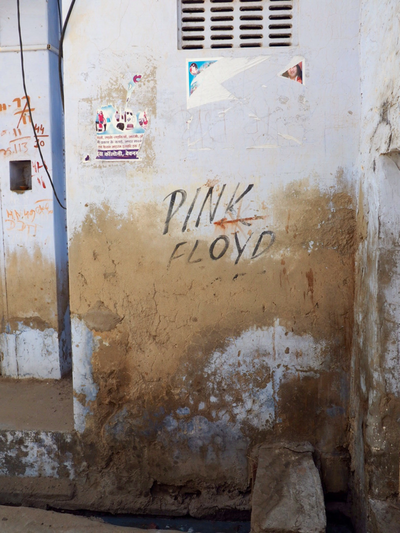
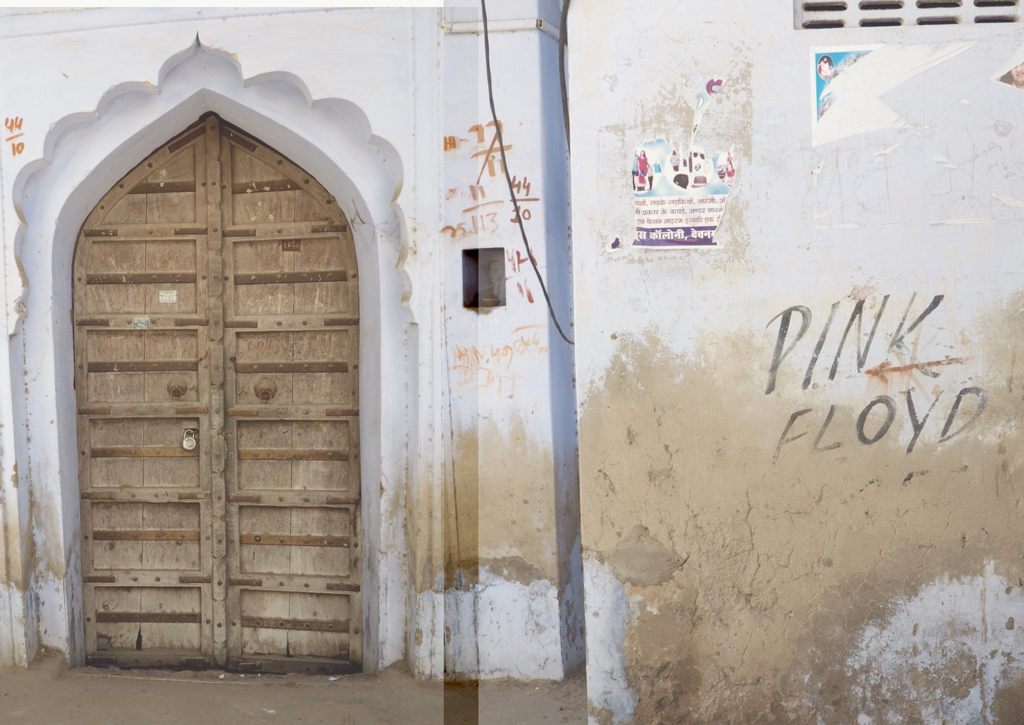
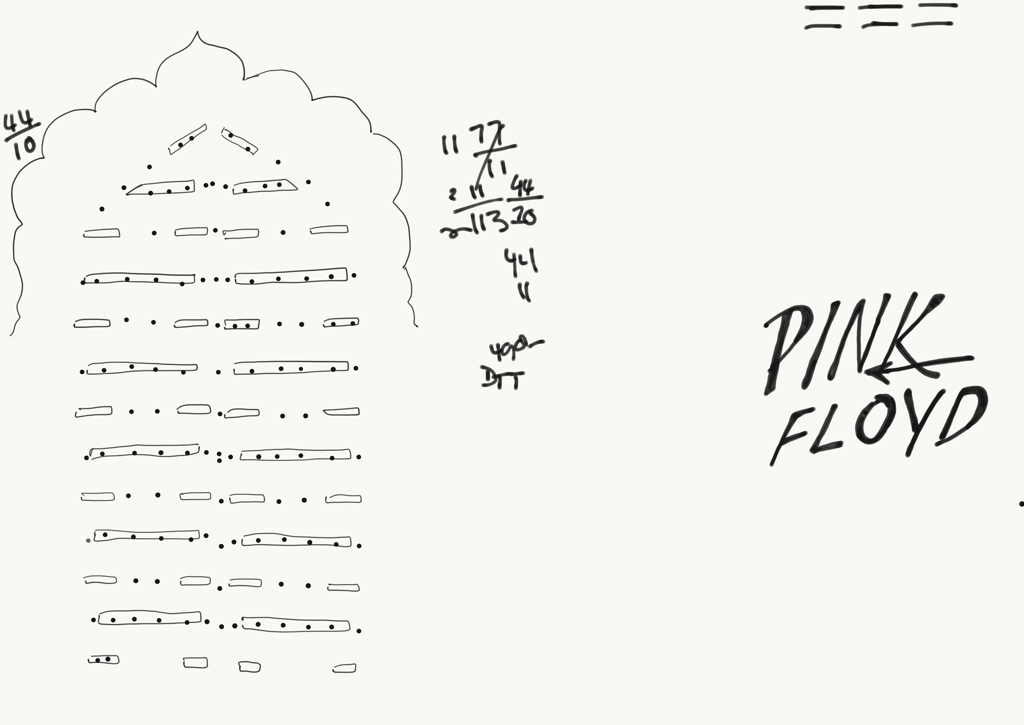
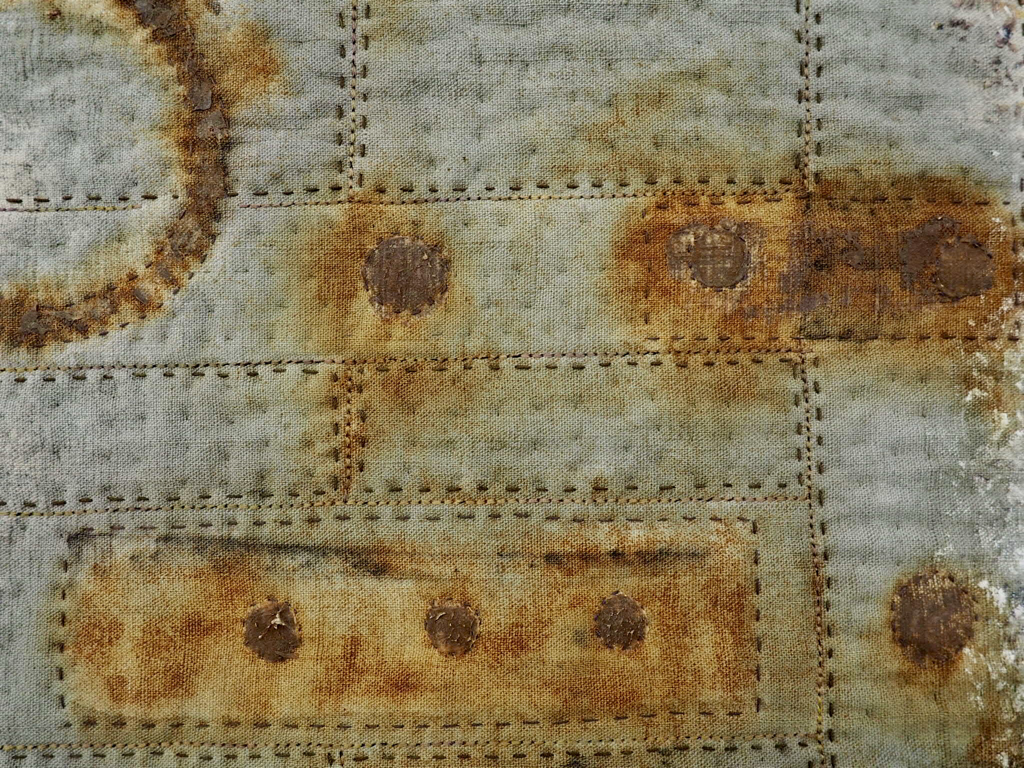
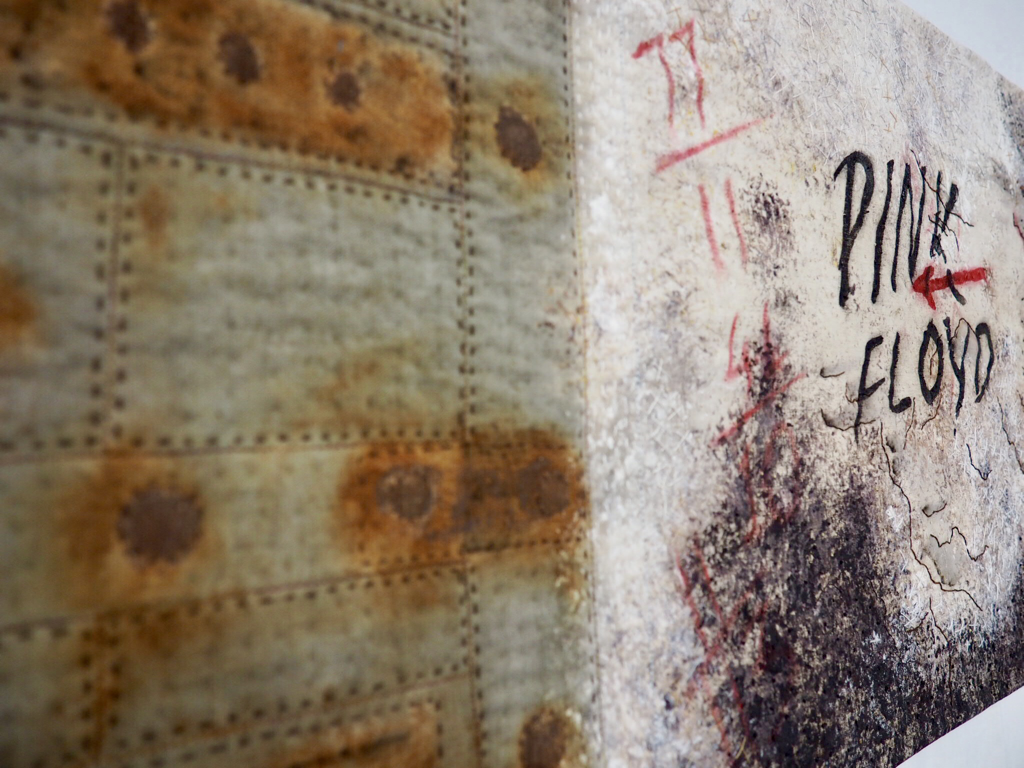
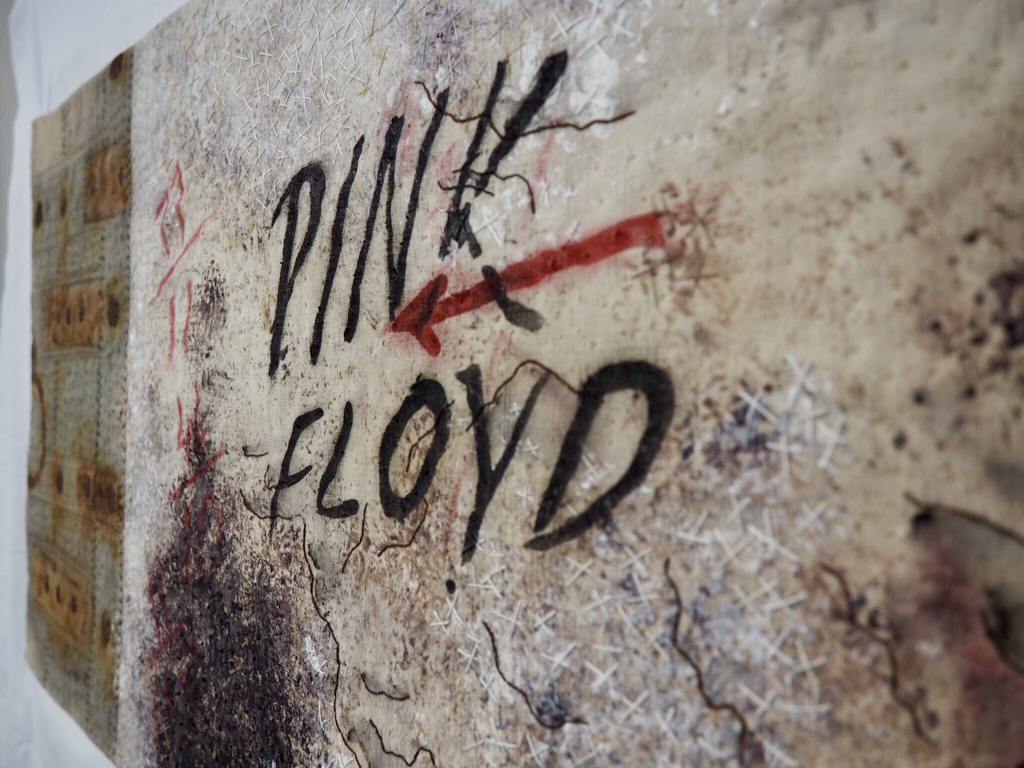
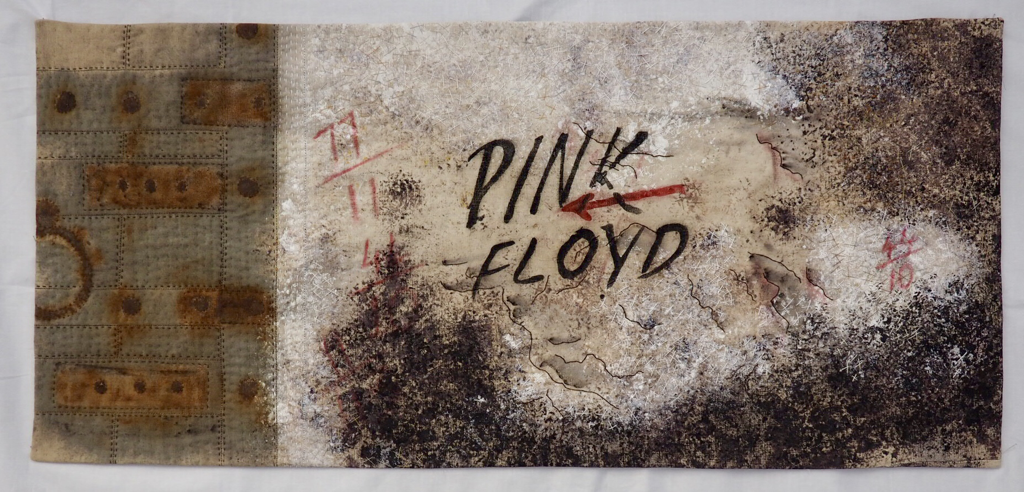


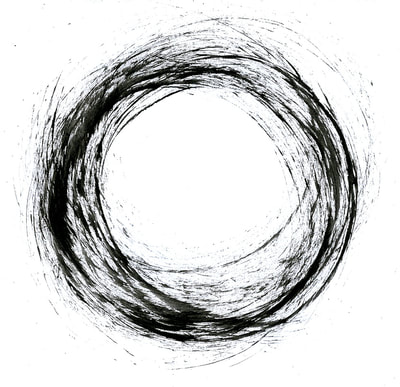
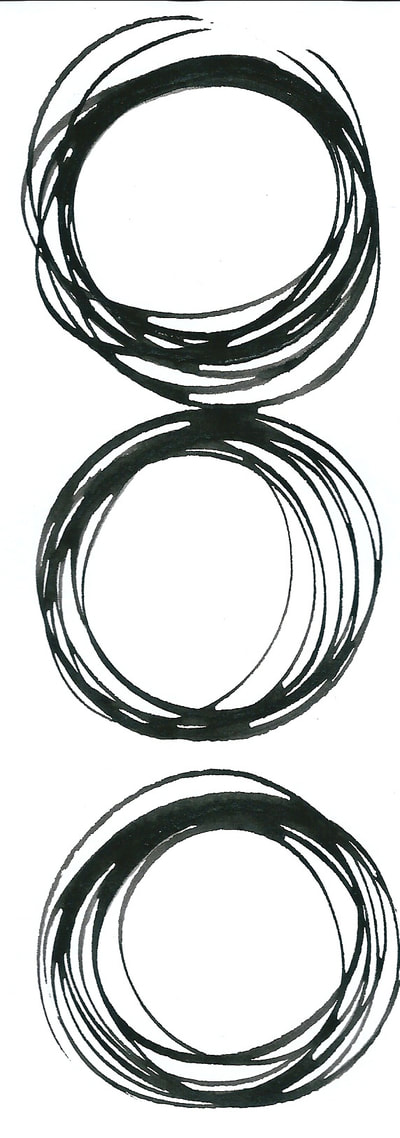

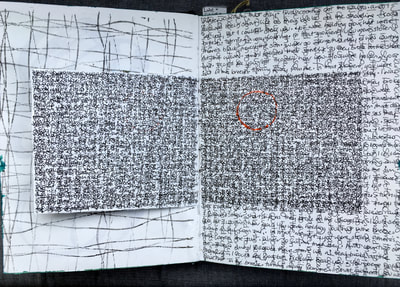
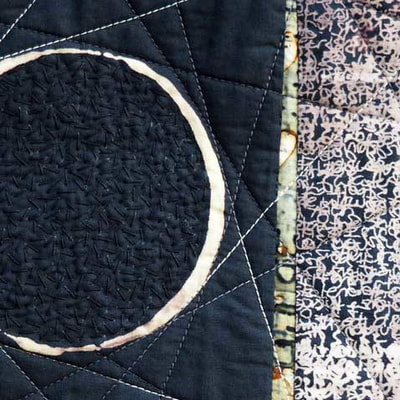
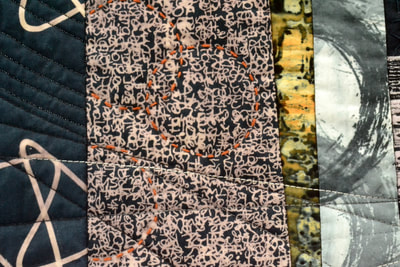
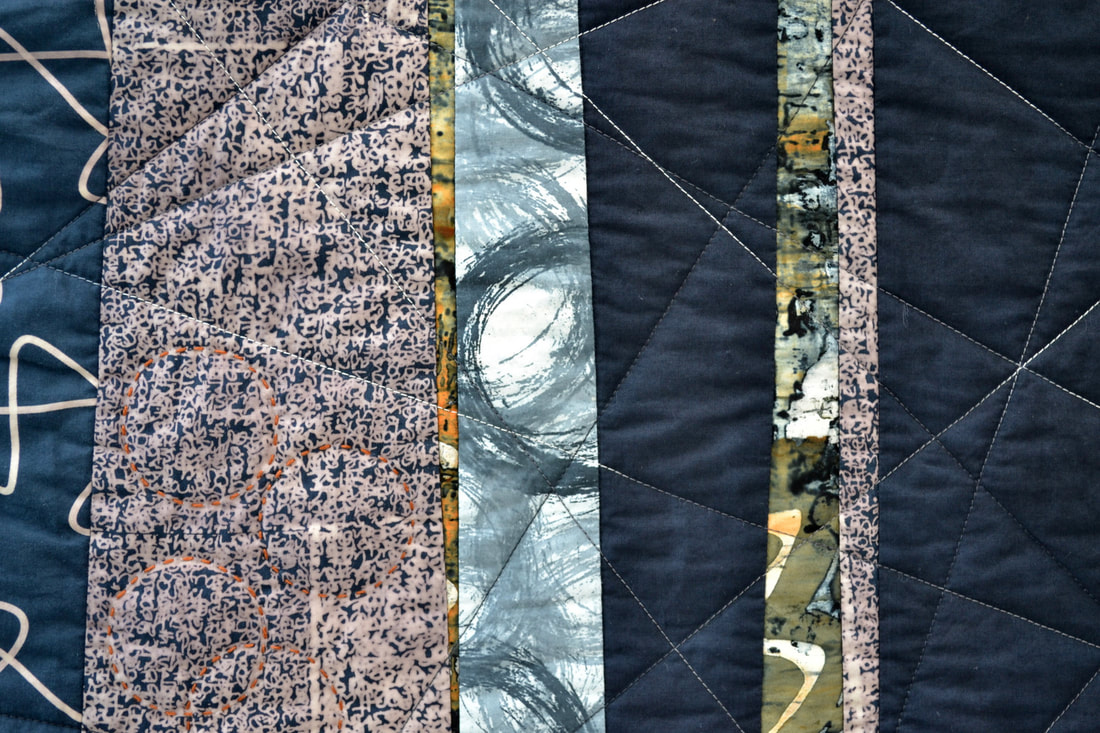
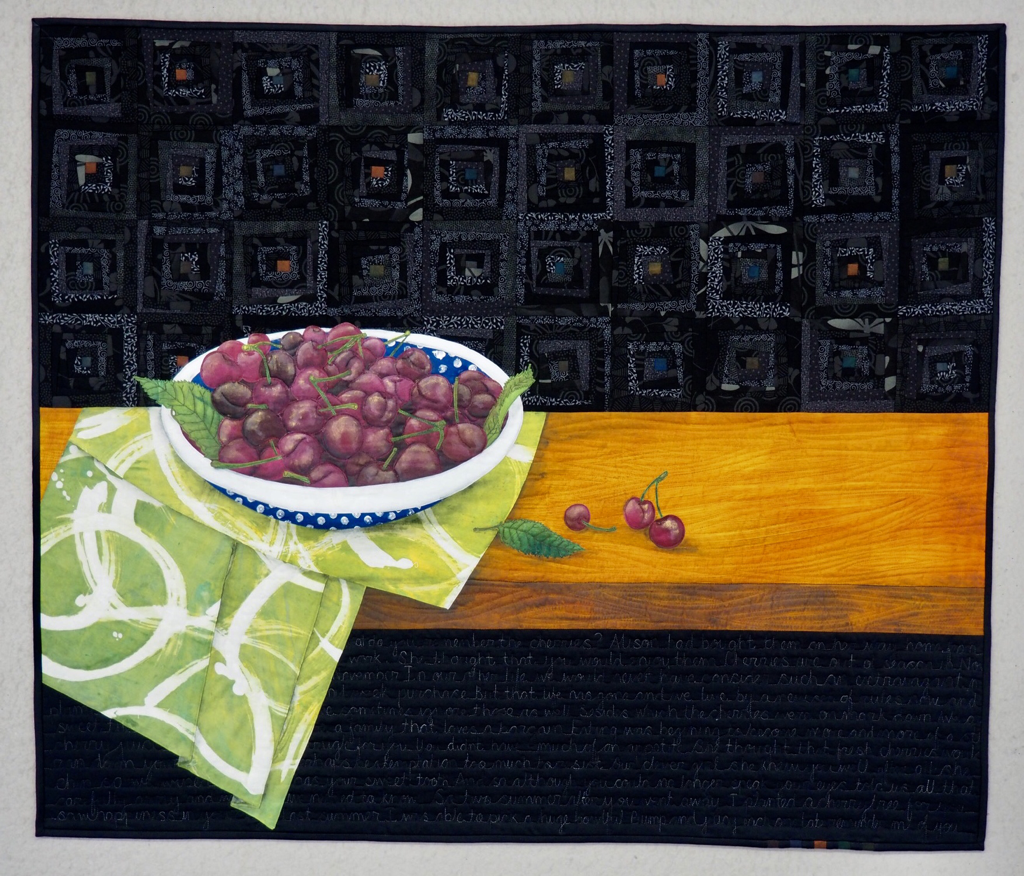
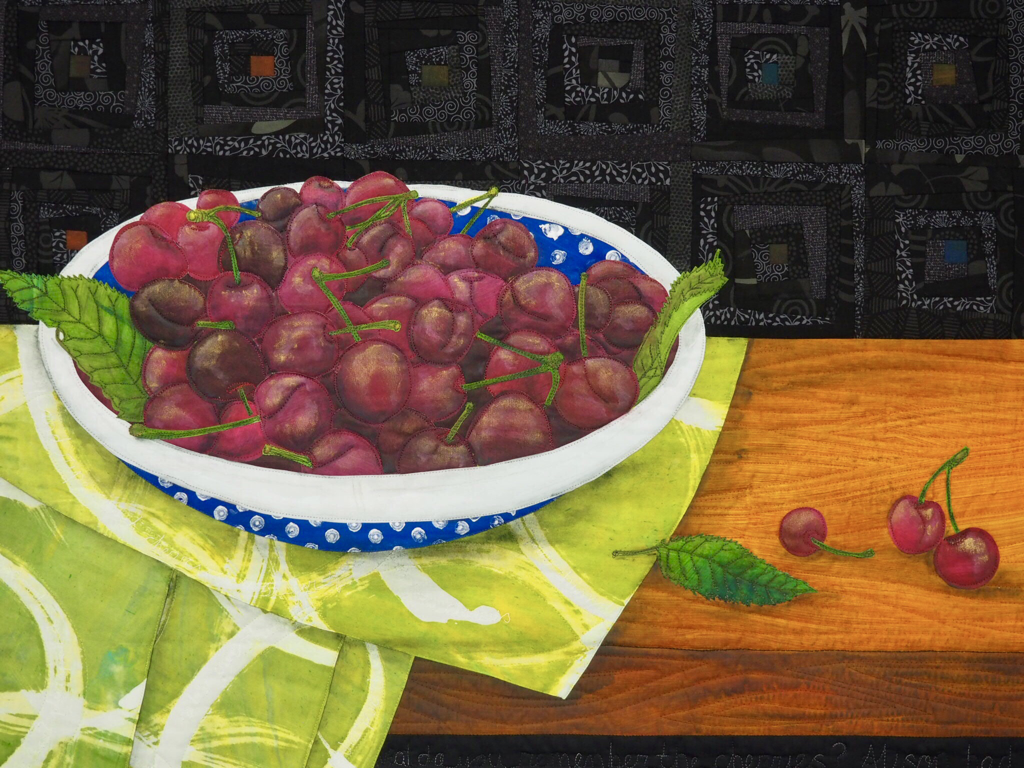
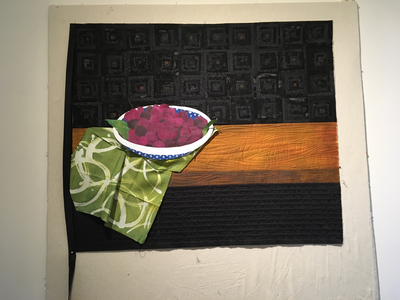
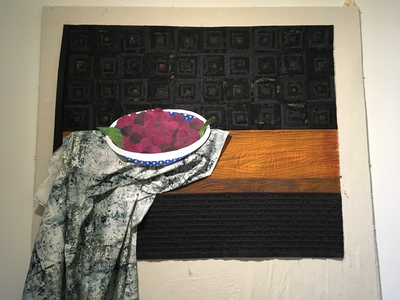
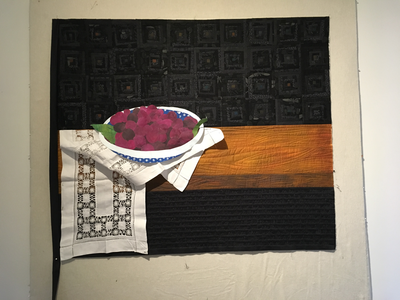

 RSS Feed
RSS Feed
